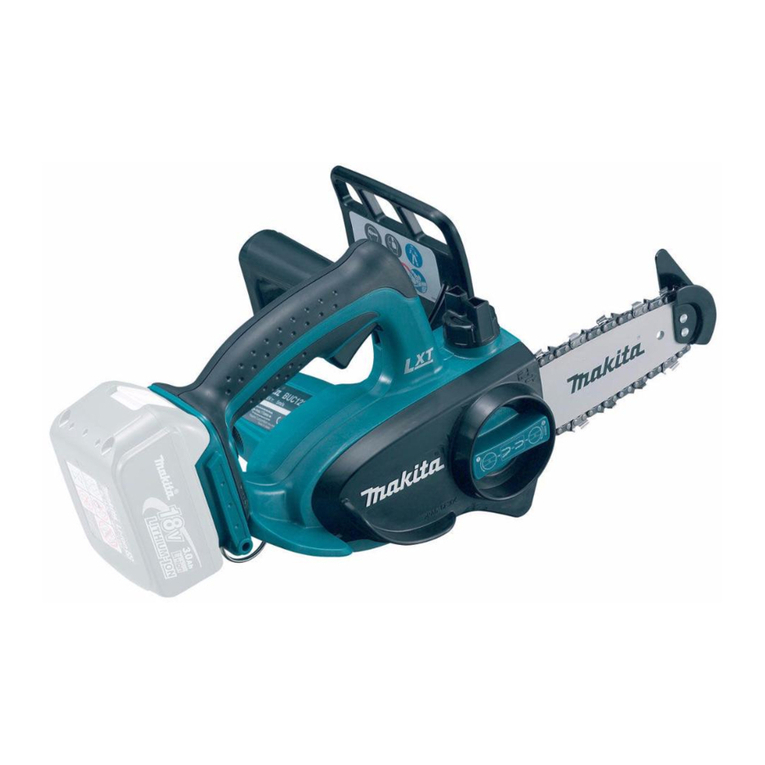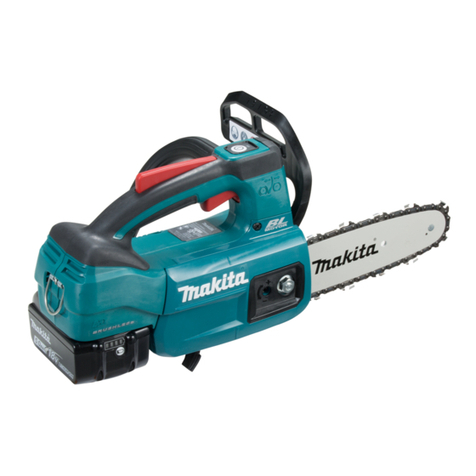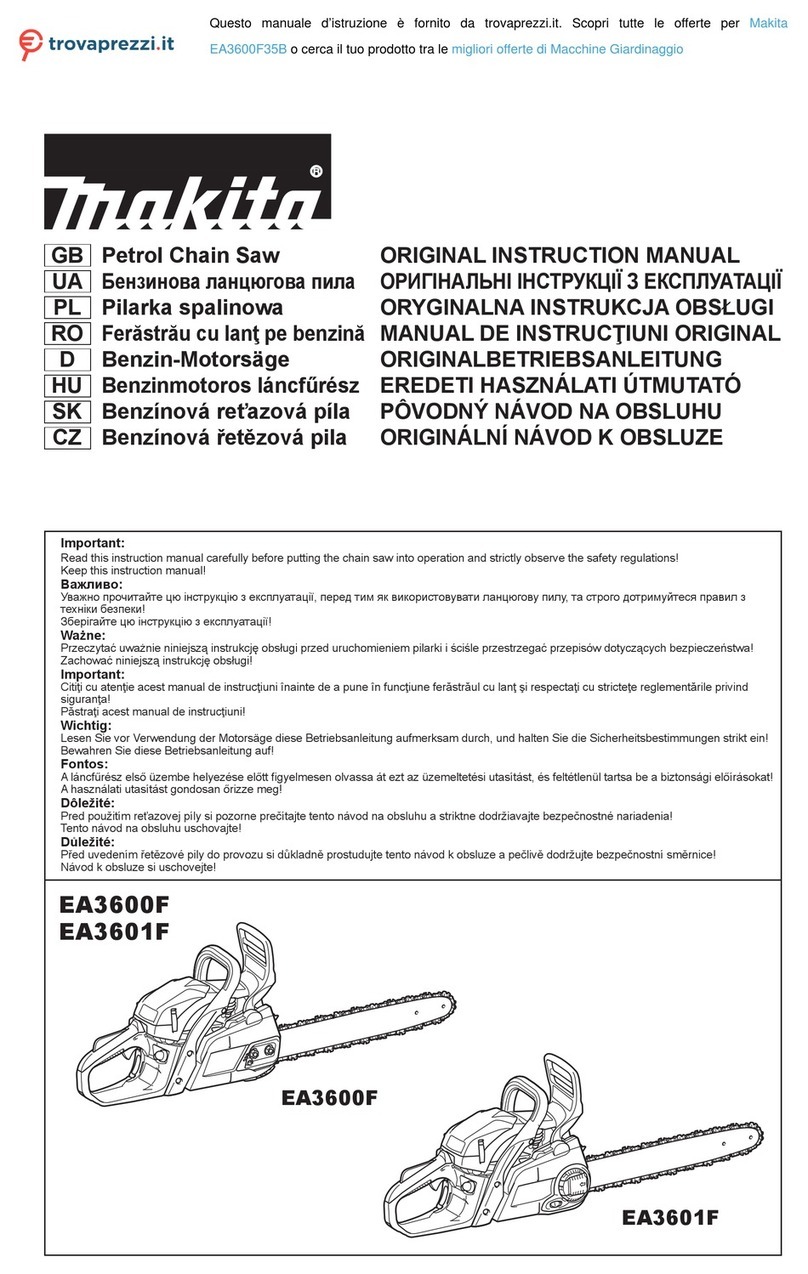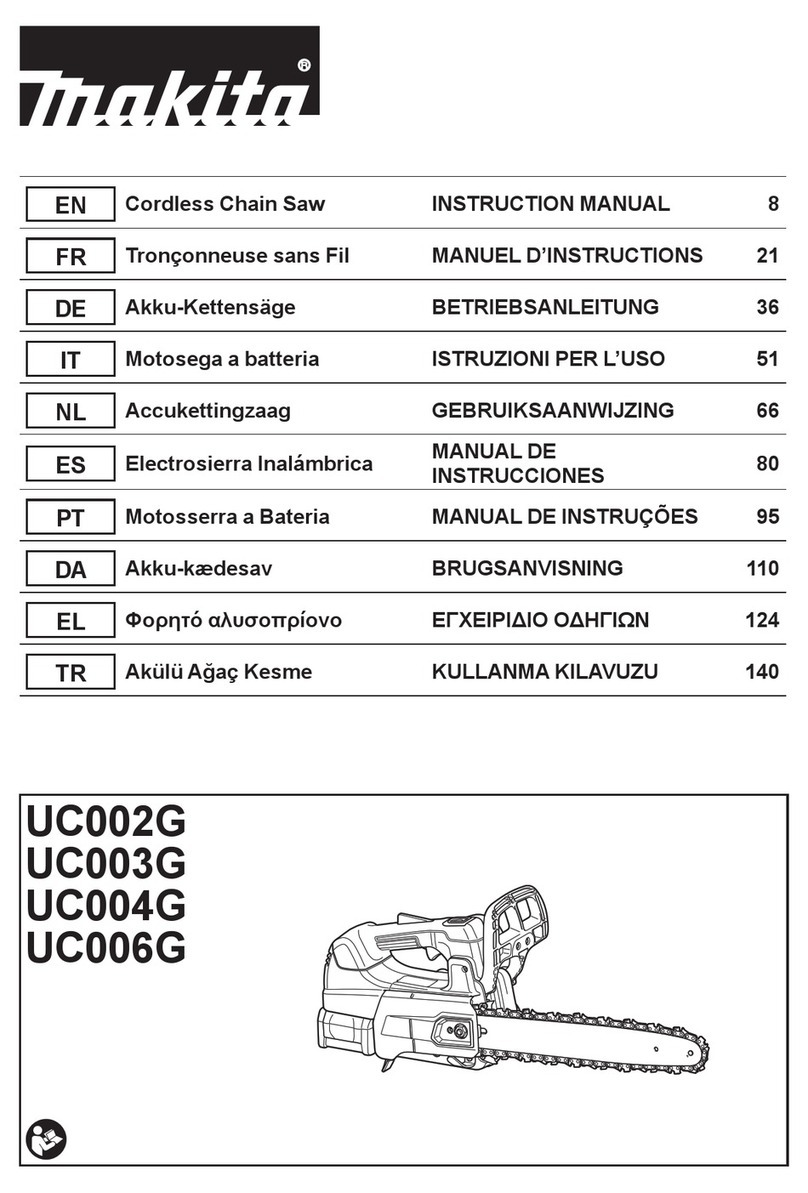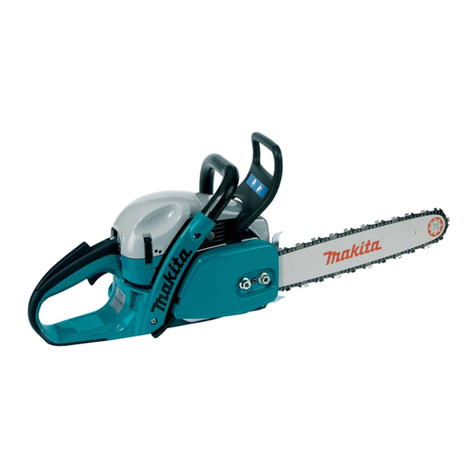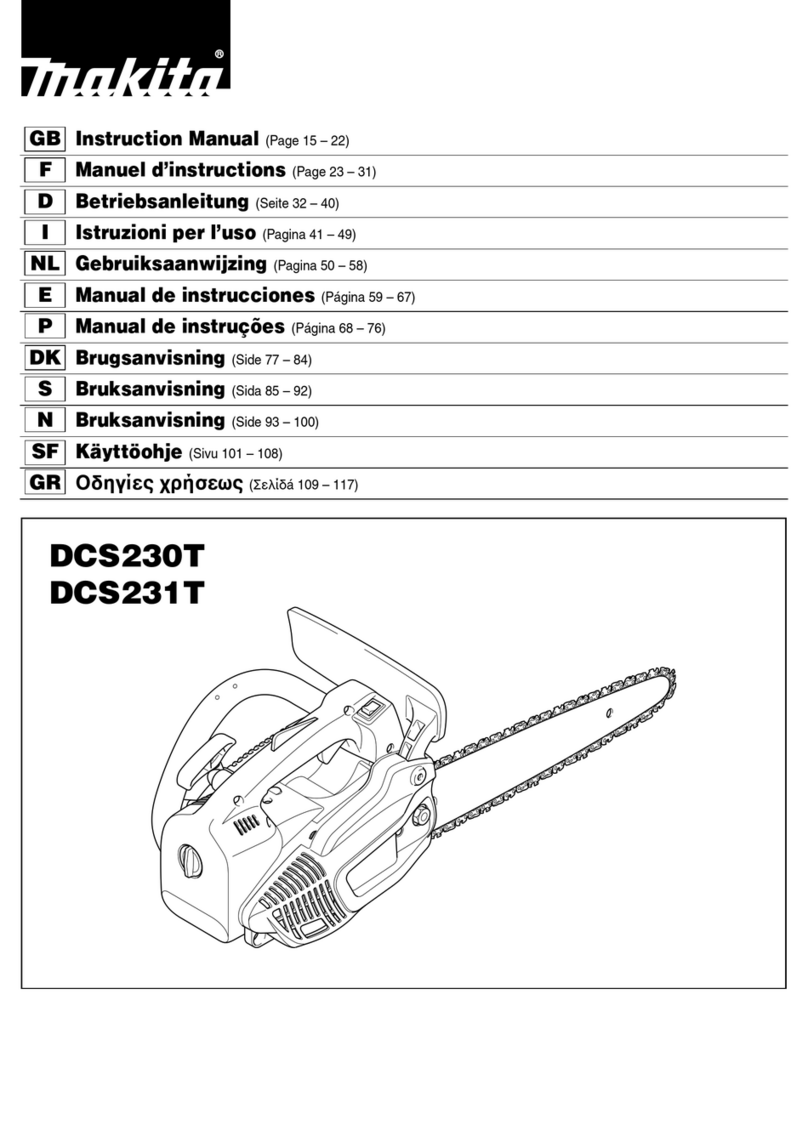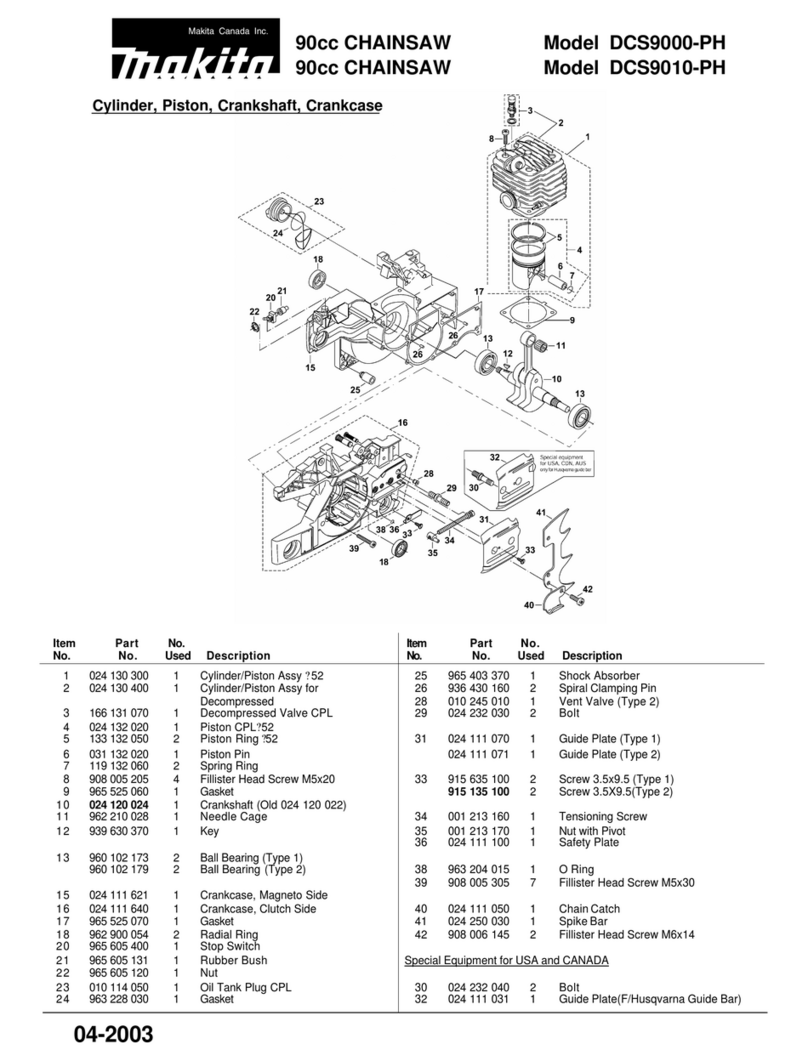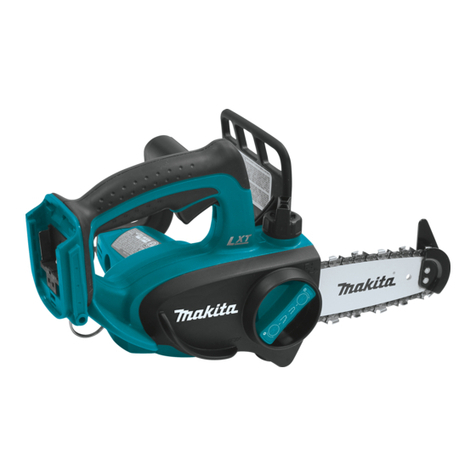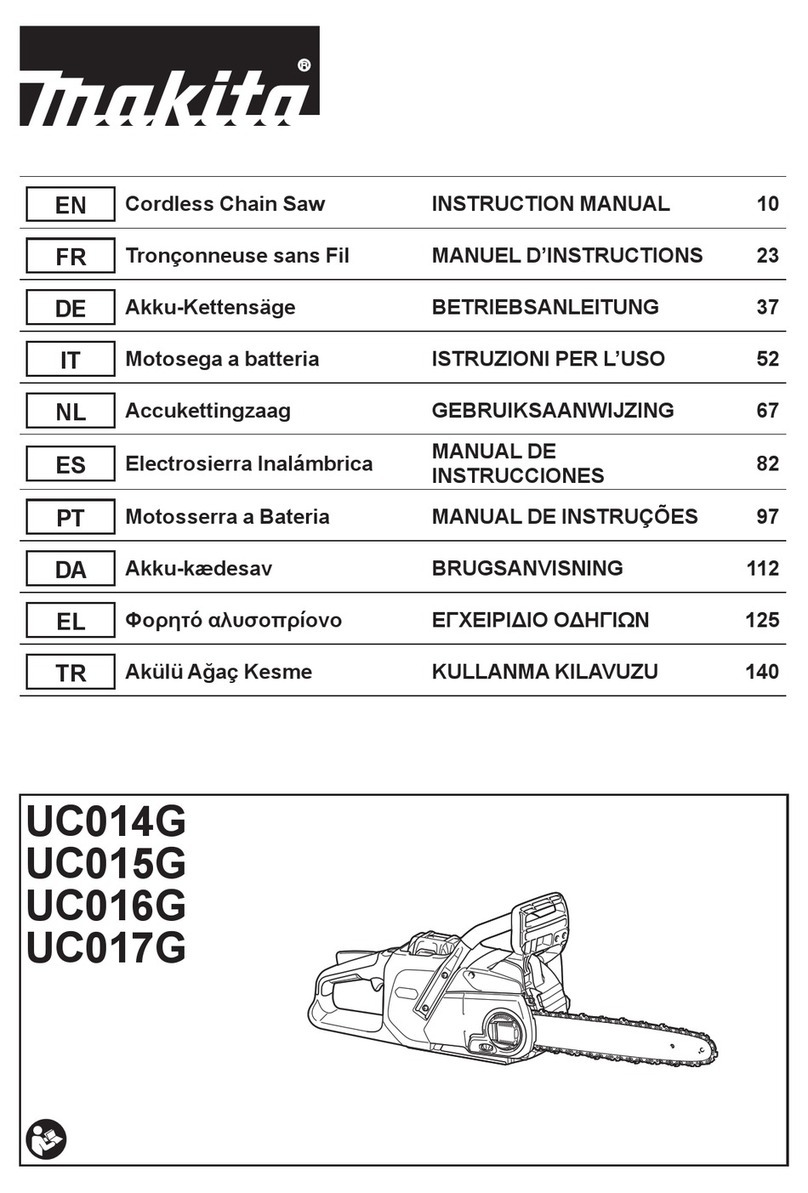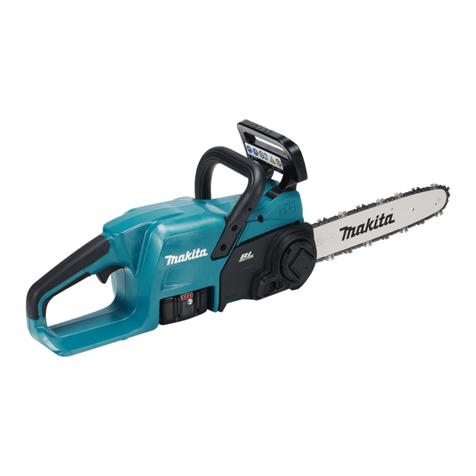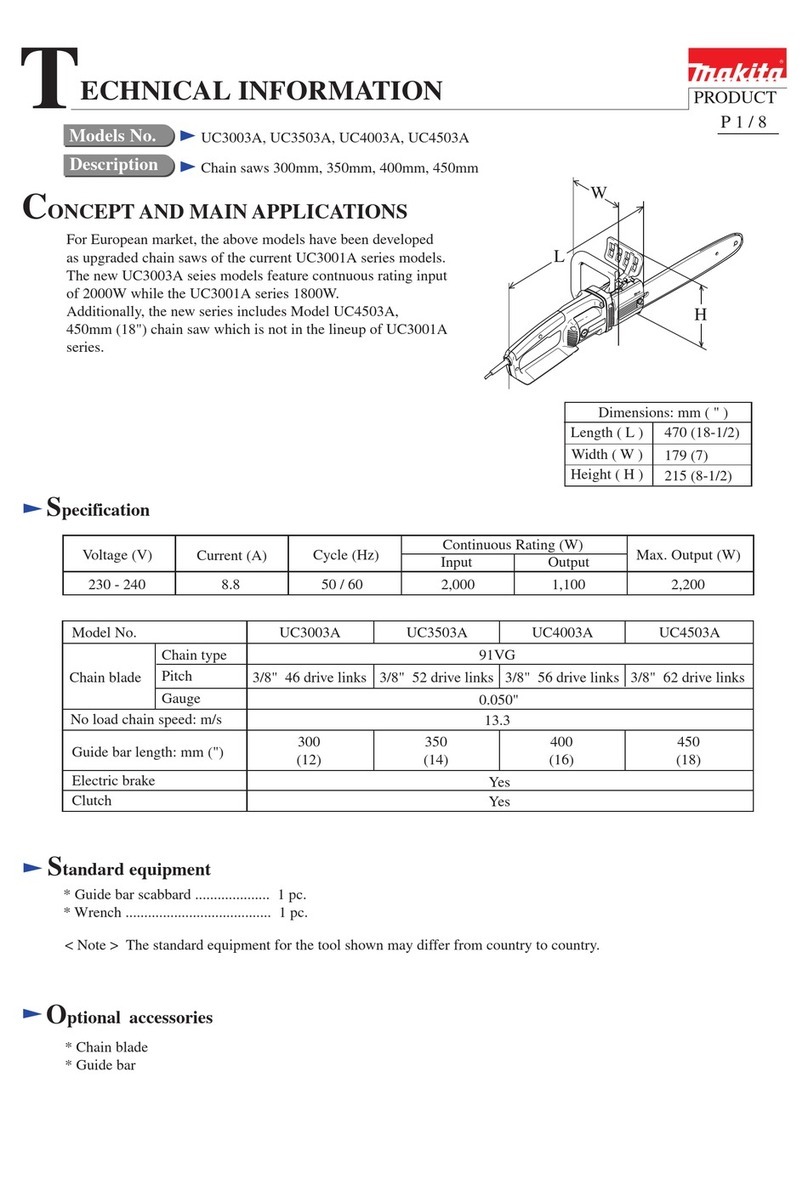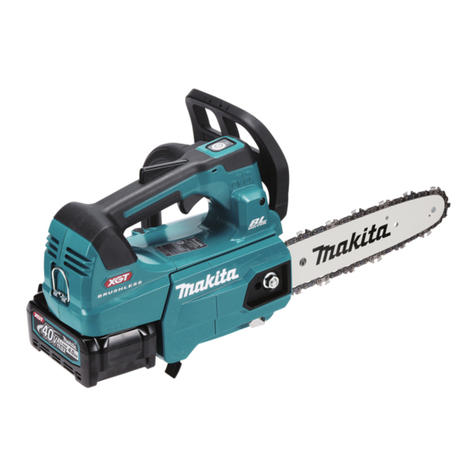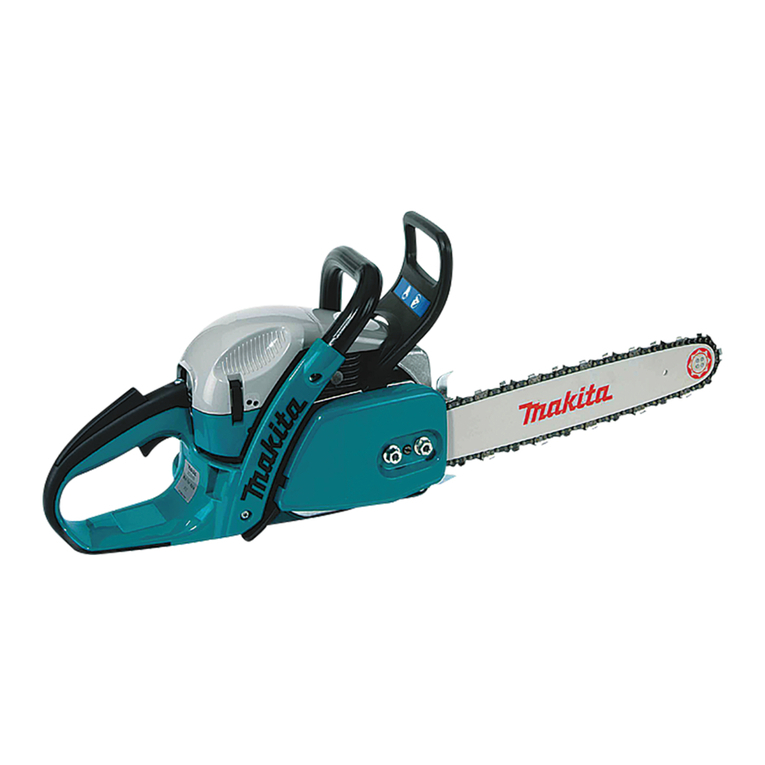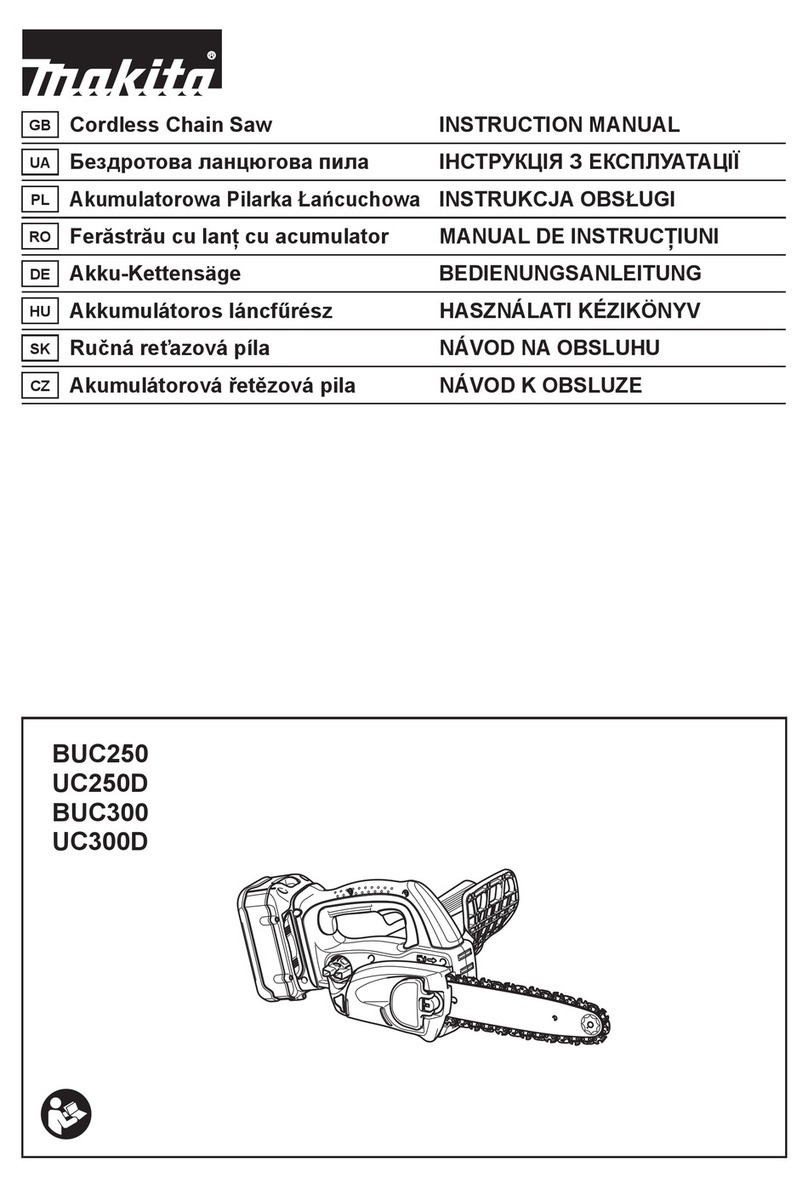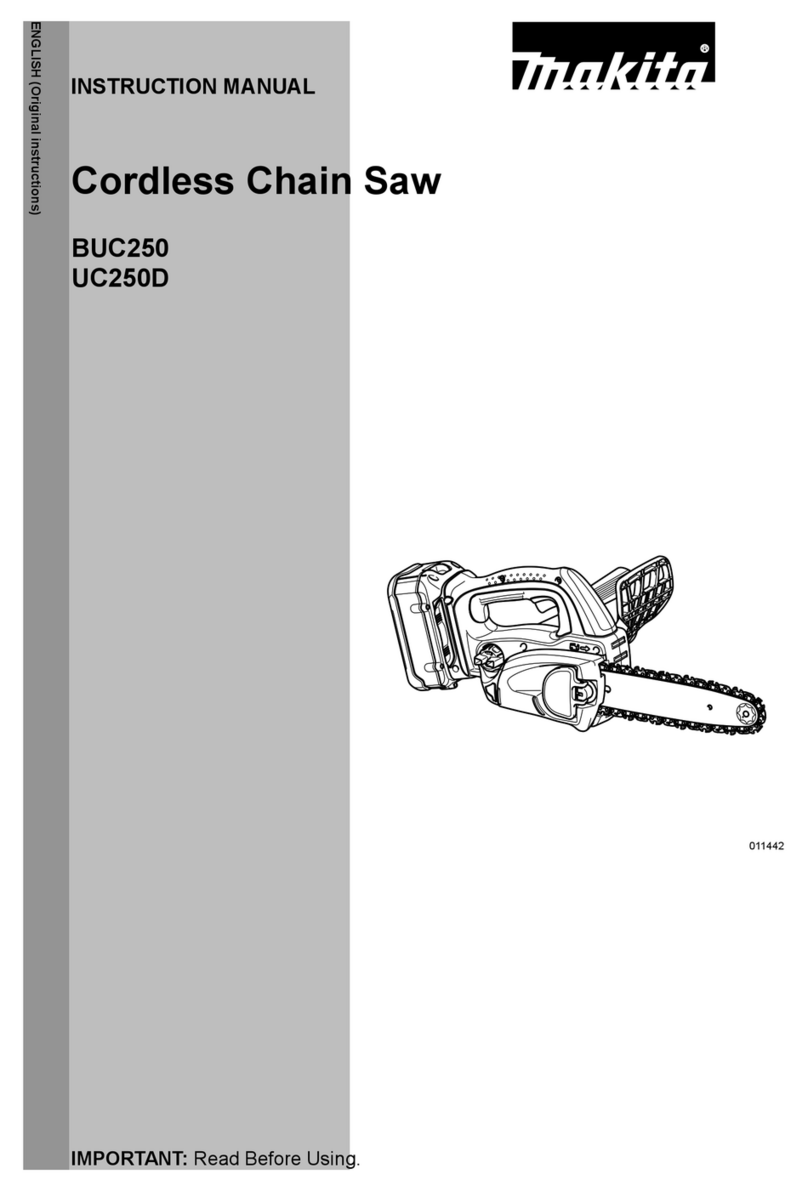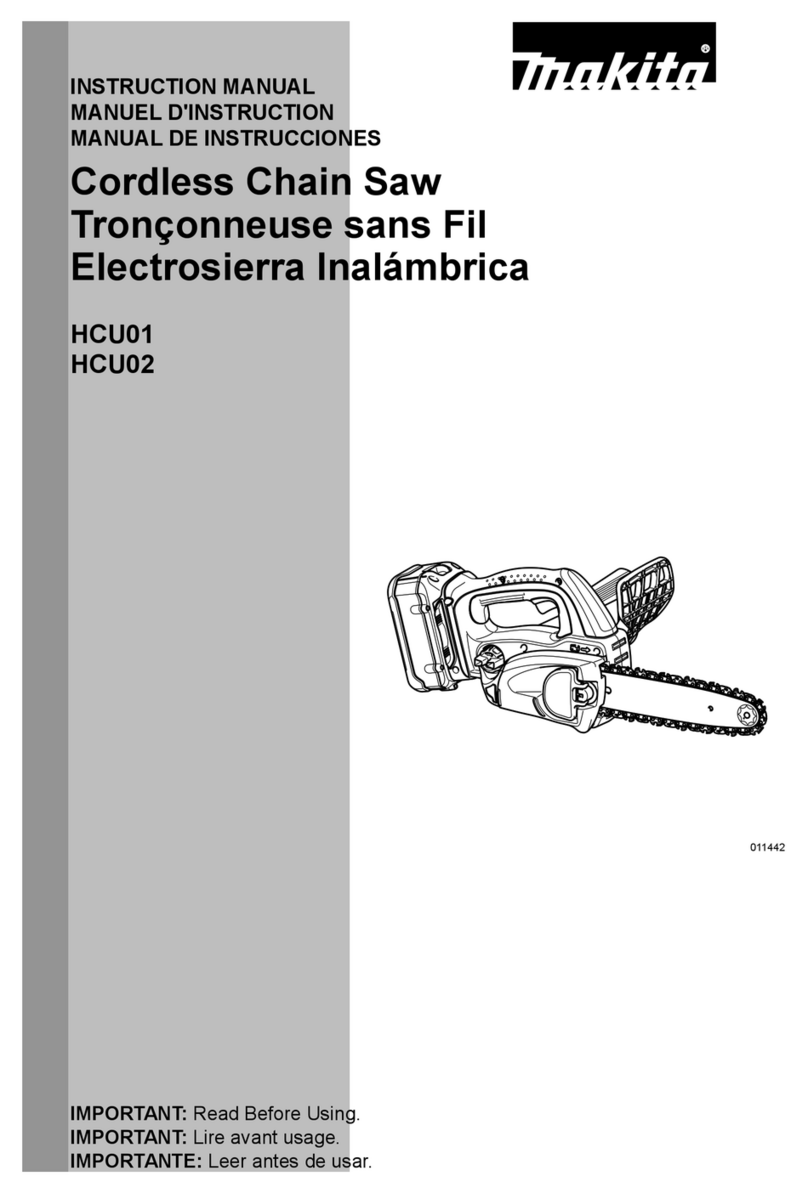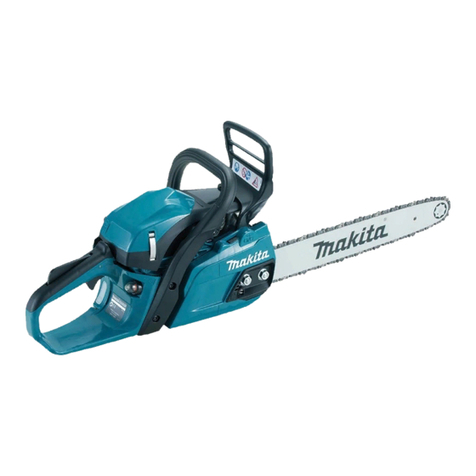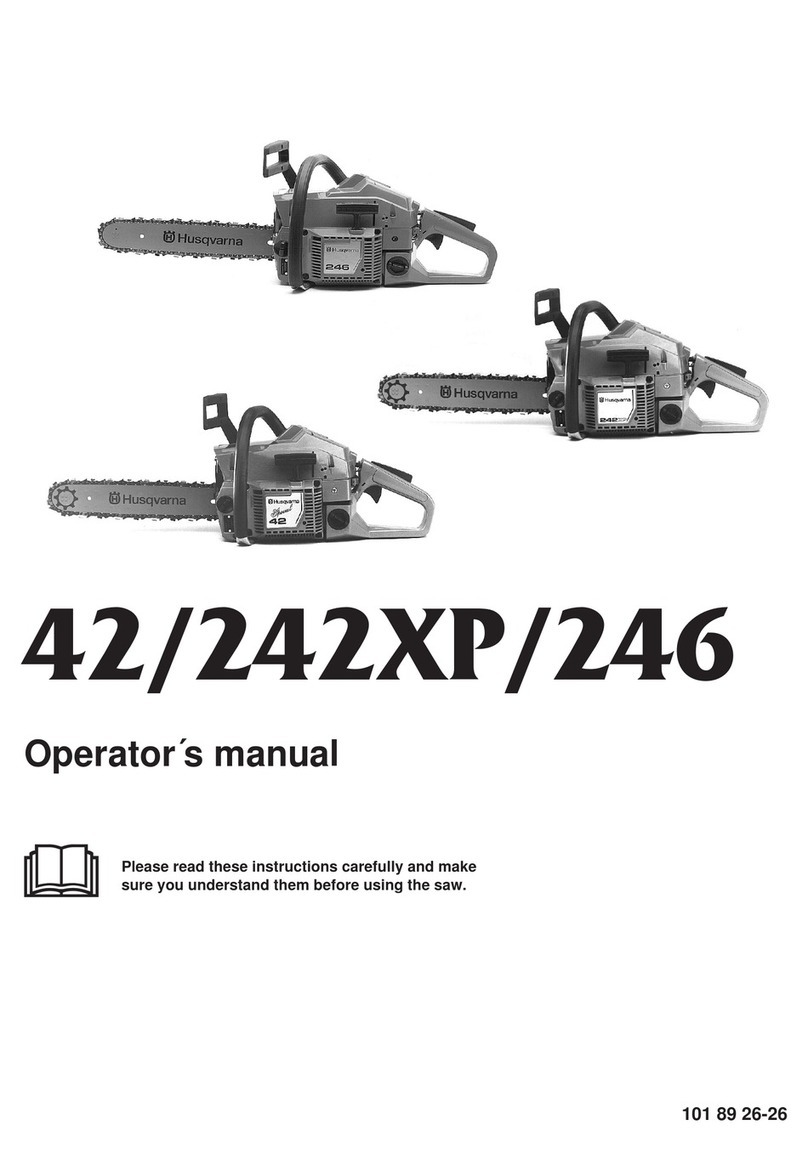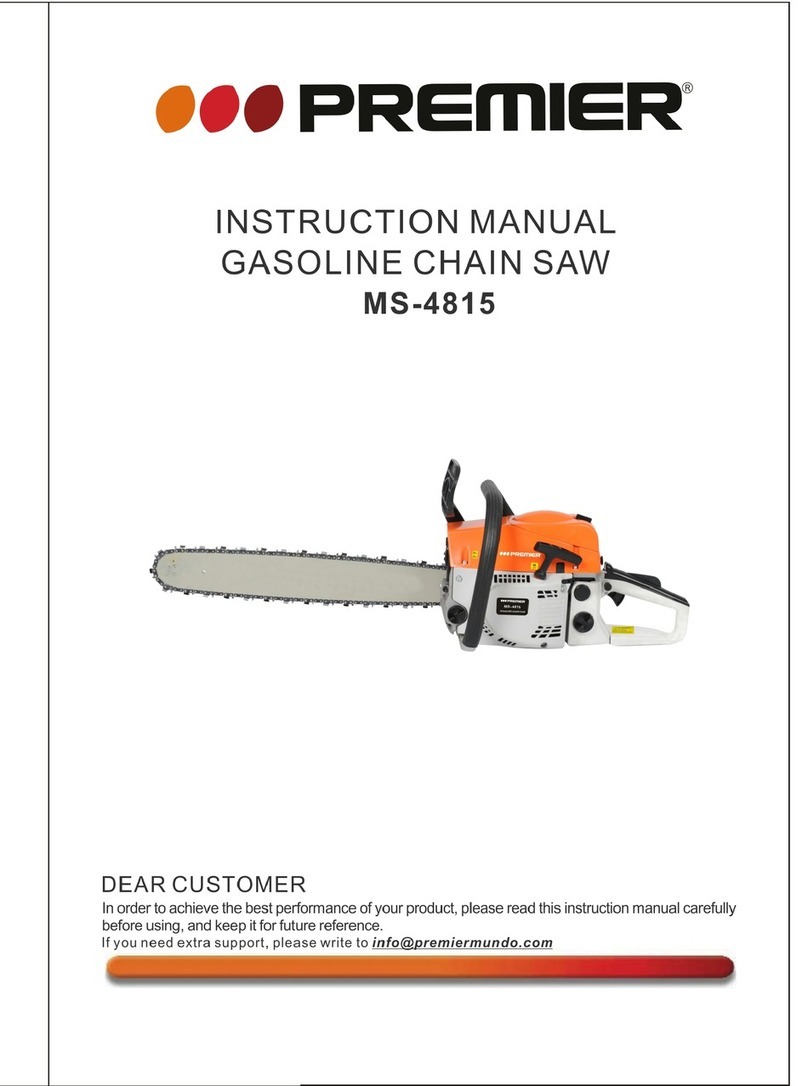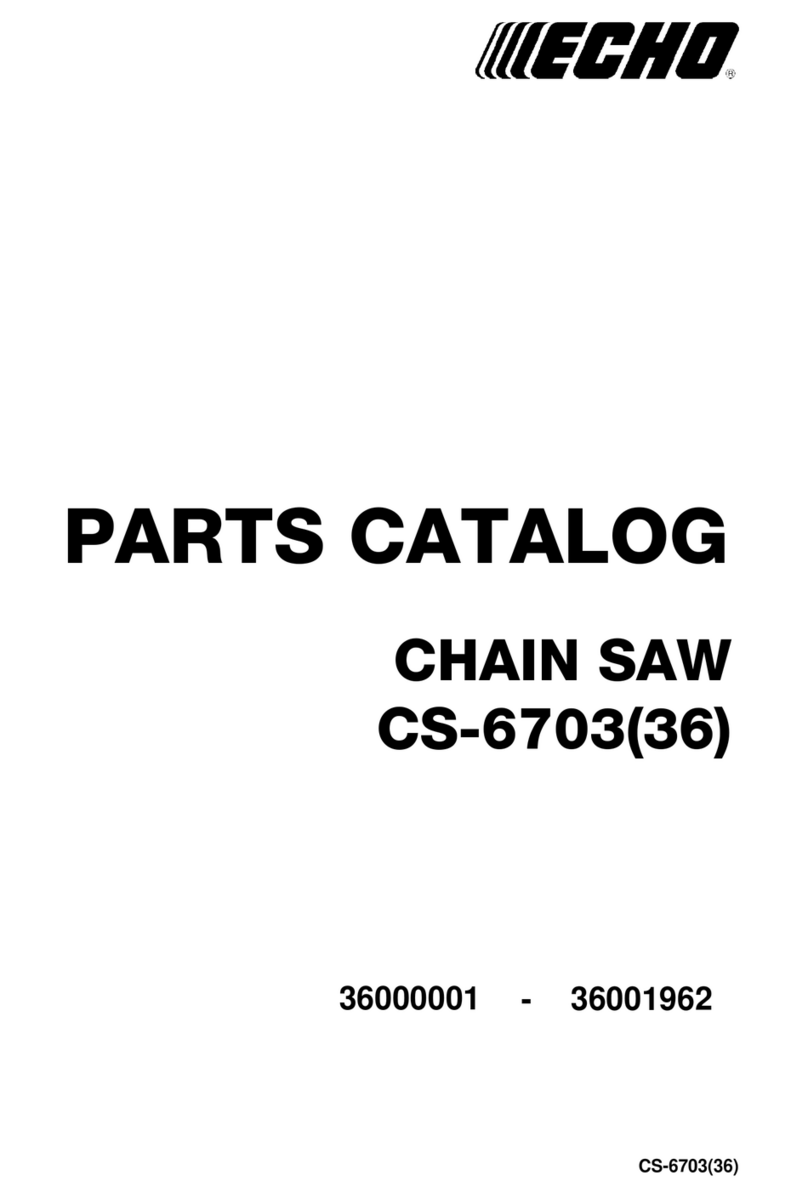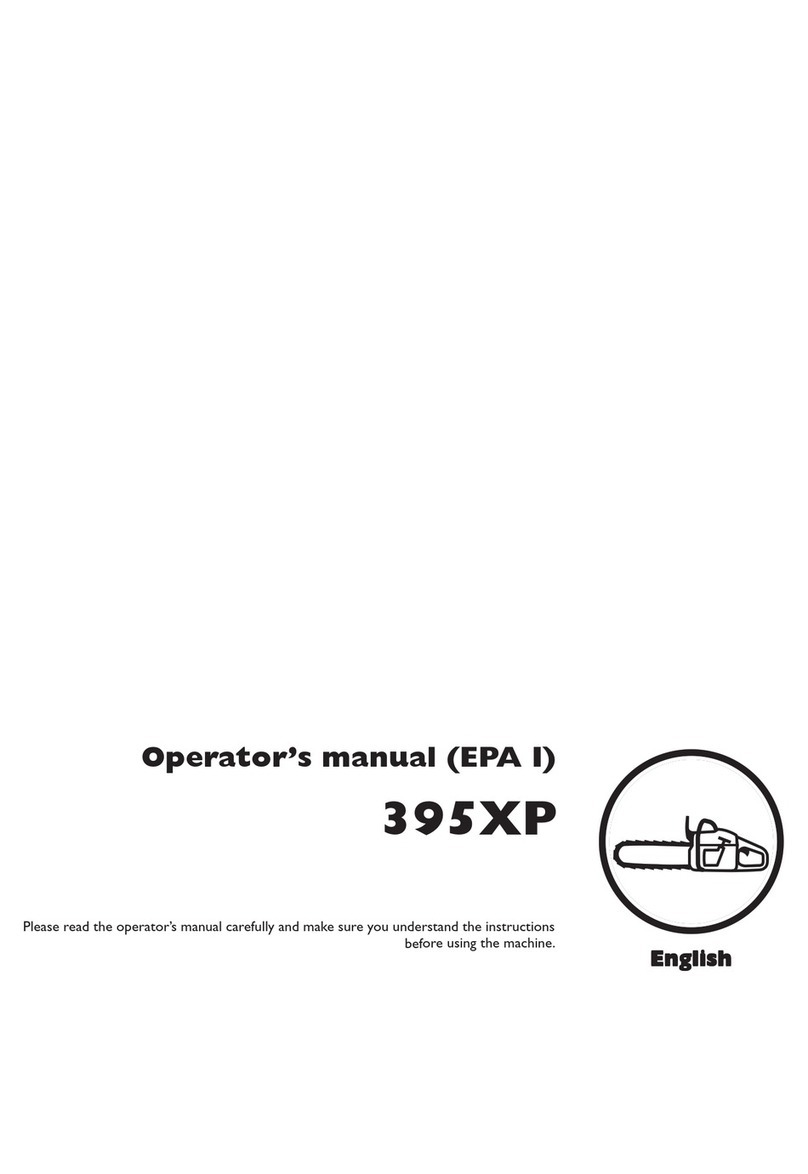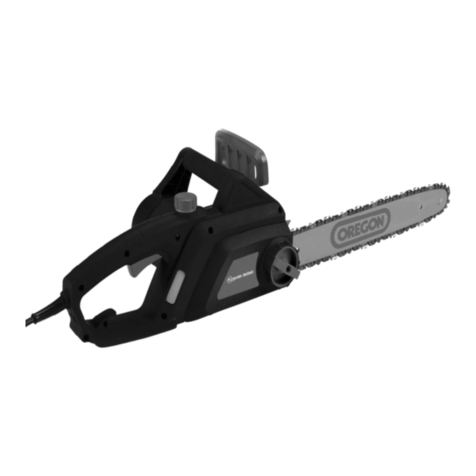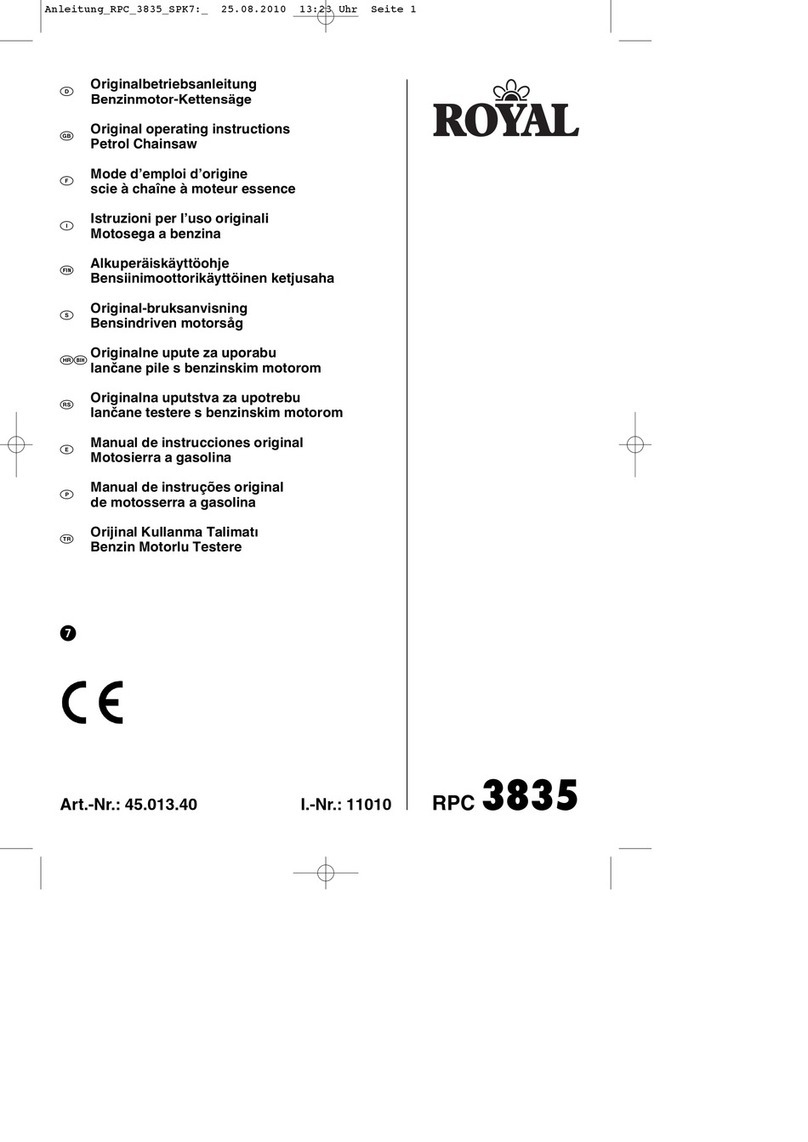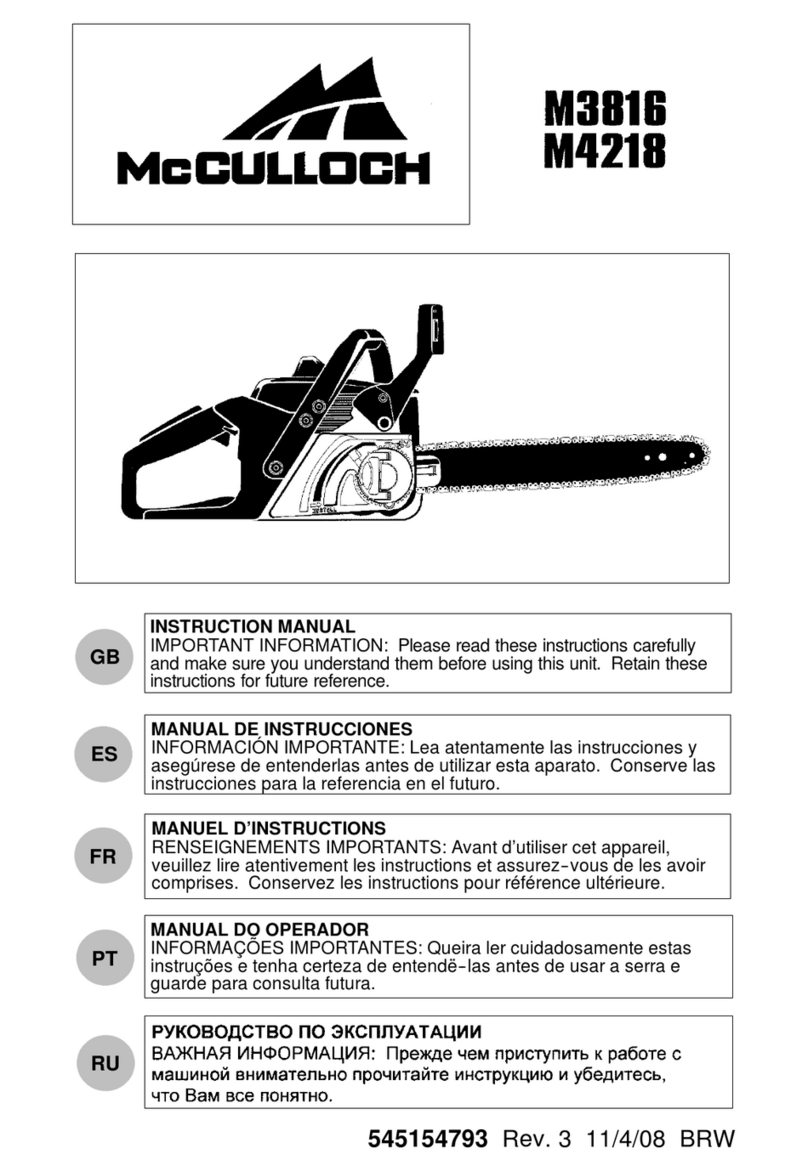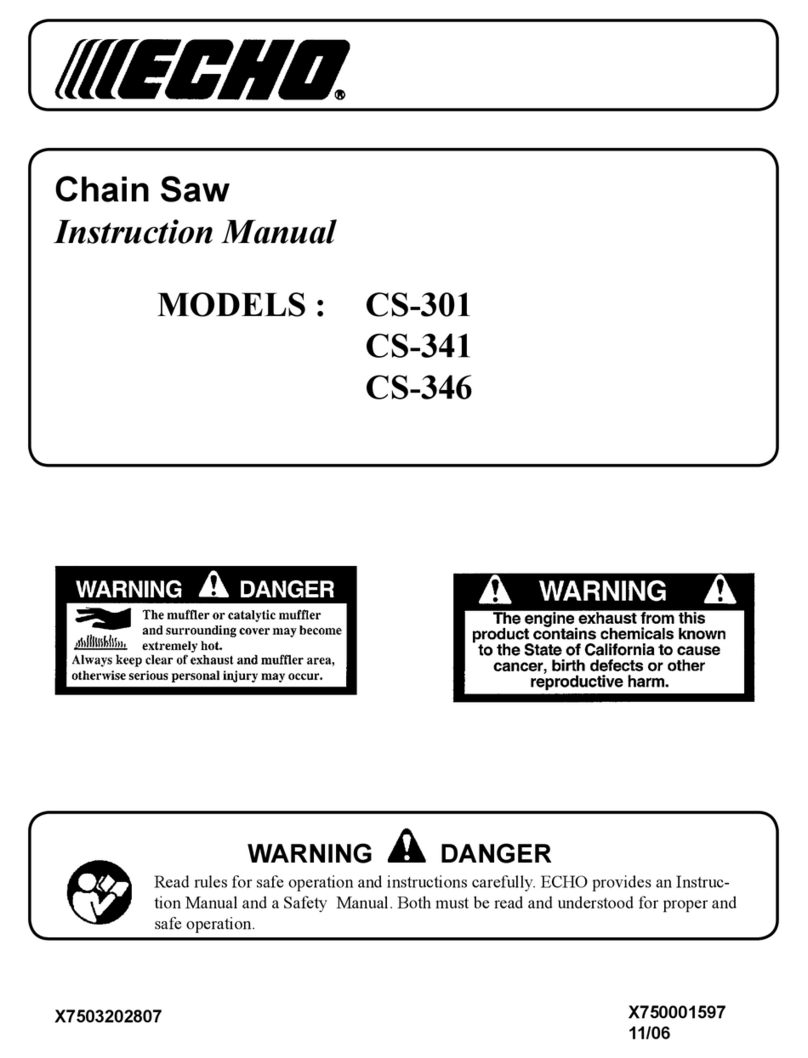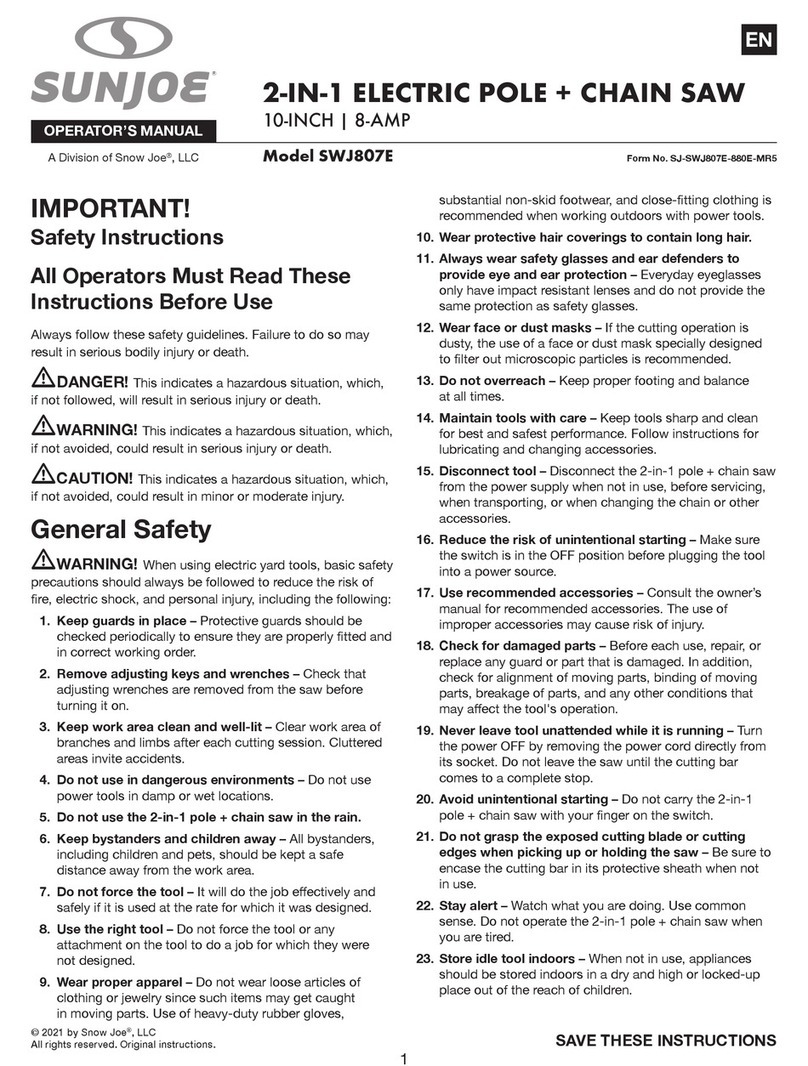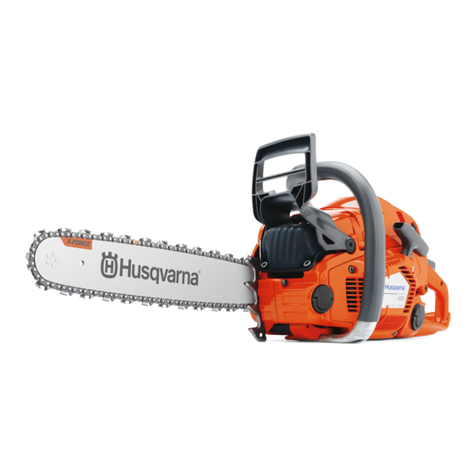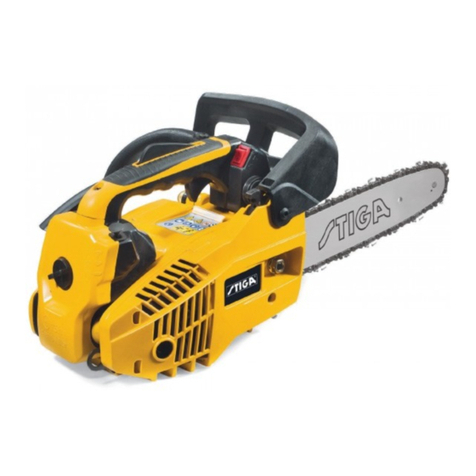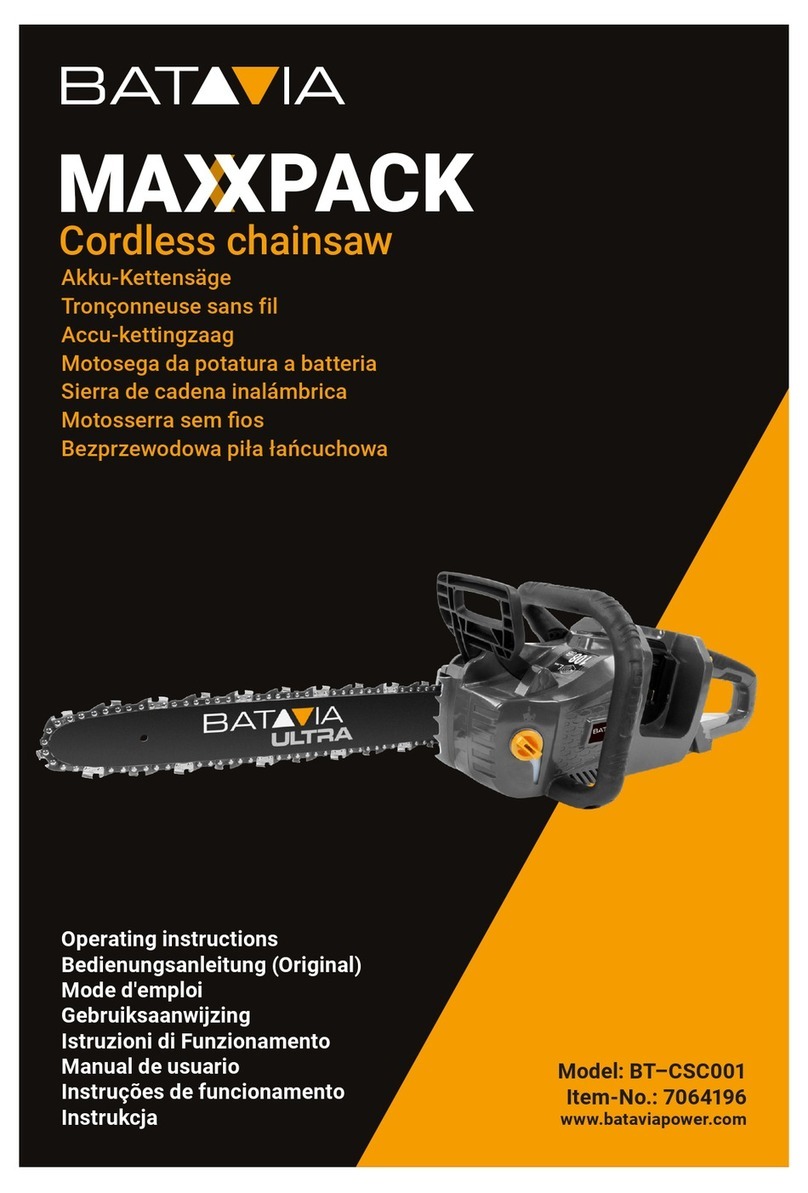
10
Symbols
You will notice the following symbols on the chain saw and in the instruction manual:
Simbol-simbol
Anda akan melihat simbol-simbol berikut ini pada gergaji rantai dan pada petunjuk penggunaan:
Kyù hieäu
Baïn seõ thaáy caùc kyù hieäu sau treân maùy cöa xích vaø trong taøi lieäu höôùng daãn:
• Read instruction manual and follow the warning- and safety precautions!
• Bacalah petunjuk penggunaan dan patuhi peringatan dan petunjuk keselamatan di
dalamnya!
Ñoïc taøi lieäu höôùng daãn vaø tuaân theo caùc caûnh baùo vaø löu yù an toaøn!
• Warning: This saw is to be used by properly trained operators only.
• Peringatan: Gergaji ini hanya untuk digunakan oleh operator yang telah terlatih baik.
Caûnh baùo: Cöa naøy chæ daønh cho ngöôøi vaän haønh ñaõ ñöôïc huaán luyeän kyõ.
:
• Particular care and caution!
• Perhatikan baik-baik dan hati-hati!
Caån thaän vaø thaän troïng ñaëc bieät!
• Forbidden!
• Dilarang!
Bò caám!
• Wear protective helmet, eye and ear protection!
• Kenakan helm pengaman, pelindung mata, dan pelindung telinga!
Ñoäi muõ baûo hoä, thieát bò baûo veä maét vaø tai!
• Wear protective gloves!
• Kenakan sarung tangan pelindung!
Ñeo gaêng tay baûo hoä!
• Use appropriate protection for foot-leg and hand-arm.
• Gunakan pelindung yang sesuai untuk kaki-tungkai dan tangan-lengan.
Söû duïng ñoà baûo hoä phuø hôïp daønh cho baøn chaân-caúng chaân vaø baøn tay-caùnh tay.
